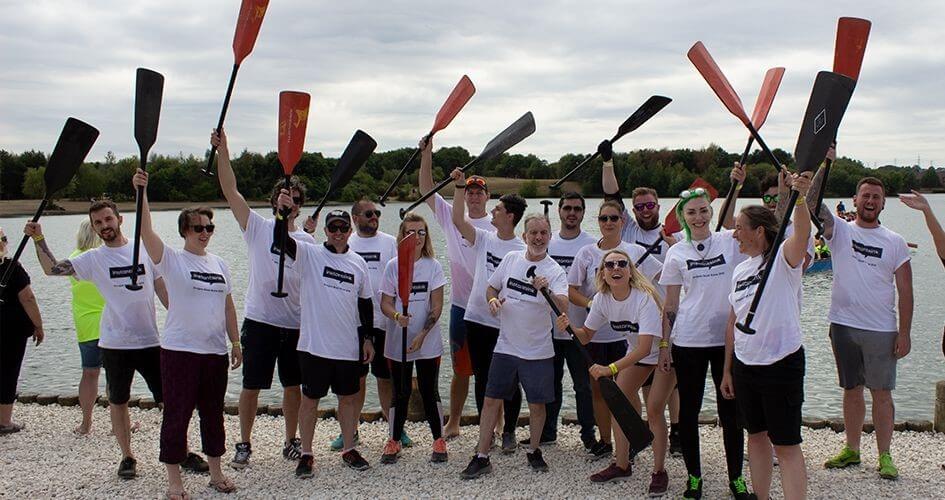Fundraising is an essential activity for any successful charity. In fact, 22% of us prefer to give money to a charity through or as part of an event, so not hosting one might mean missing out. If you’ve never hosted a fundraising event before, then not to fear! We’ve created this easy guide to help you nail your first charity fundraiser so you can spread awareness and raise those all-important funds to benefit the community you support.
-
Define the Purpose of Your Event
The most important decision you’ll make about your charity event is: what’s it for? Are you wanting to raise money to go towards one specific project? Increase your membership numbers?
Having a clear aim for your event will make it easier to determine the kind of event you decide to run, who you target (and how) as well as an overall goal you want to achieve, which can help stop that dreaded overwhelmed feeling you might get if event planning isn’t necessarily your thing.
Whatever your purpose is, it should align with your fundraising strategy and other projects that are currently in progress to have the biggest impact on your charity.
-
Set a Goal
Now you know why you’re hosting the event, now you need to decide how to measure the event’s success. Once you’ve got your first event out of the way, you’ll be able to compare successes to create your goal, but for now, try and estimate the amount of money you’d like to raise.
Think about all the different avenues you can use to raise money at an event – selling admission tickets, raffles and selling baked goods are all great additions to funds raised by donations
Remember that raising funds isn’t the only thing charity events can achieve. They also help to raise awareness for your cause, so metrics like the number of attendees are also great ways to measure success beyond the money raised.
-
Create a Budget
Your charity event budget needs to be high enough to create an appealing event that lots of people will want to take part in but not so high that it impedes too much on the funds you’ve raised – after all, the main reason you’re hosting the event is it raise funds; it’s called a fundraiser for a reason!
A budget helps keeps costs in perspective. We also recommend leaving a little extra room for any uncertainties that might crop up. Then, if they don’t crop up, you’ll save more money than expected, but they’re not eating away at your profits if they do.
-
Find Your Event's Target Audience
The kind of event you plan and how you market it will depend entirely on who you want to attract to the event. If you’re hosting a Saturday afternoon family fun event, that’ll be a different audience to a black-tie evening event. Similarly, if your event involves climbing a mountain, that will attract a niche audience compared to something like a summer fair.
This will also depend on who is most likely to give to your charity. According to the National Philanthropic Trust, younger generations are more likely to donate to physical and mental health charities, homeless shelters and educational organisations, whereas older generations tend to give to hospitals, disaster relief and religious charities.
-
Find a Venue
Finding somewhere to house your event will feel like the first piece of your plan to fall into place. Once you’ve decided on a venue, you can then start thinking about stalls and themes that fit.
Since you’re a charity, you might find that some venues will offer you their space at a discounted rate, so be sure to shop around before settling on your location. If your event is taking place in the summer, outdoor venues can also be a great option.
-
Come Up with a Theme
Unfortunately, ‘raising money’ isn’t enough to be a theme. You’ll need a fun idea to inspire donors to attend your event and part with their cash. Some ideas include:
• Saturday fair in the park
• Black tie auction event
• Singles charity night
• Charity fun run
• Snowdon at sunrise
• Bingo night
• Fitness challenge
• Golf marathon
• Crafternoon eventThe event you pick will have a lot to do with your target audience. For example, bingo or auction nights would probably appeal to an older person, whereas something more active would generally be targeted at a younger audience.
If more than one idea takes your fancy, you can plan your whole year of events in advance – in fact, we highly recommend doing it this way so you can let donors know in plenty of time, especially for sponsored activities, to give them time to raise plenty of money for your cause.
Here’s a picture of us at Bluebell Wood Hospice’s annual dragon boat race (team name: instantsink) having a whale (dragon?) of a time!

-
Sort Out the Paperwork
Some events come with more paperwork than others. For example, if your event includes some kind of raffle or another form of gambling, you’ll need to get permission from your local gaming authority.
Similarly, if you’re planning on catering for an event or hosting some kind of bake sale, you’ll need to check with your local health department to make sure you’re compliant with any regulations around this.
-
Book Your Caterers
Whilst budgeting, you will have probably spoken to a few different caterers already to get an idea of the prices they charge – if you’re catering your event at all that is. During your planning period, try and settle on your favourite and get them booked in early so you don’t miss out on the best deal.
Again, you might find that some caterers will offer their services at a lower price if they know that you’re a charity, so be sure to ask about this.
-
Buy Necessary Supplies
Time to get down to the nitty-gritty! You’re going to need lots of different things to pull off your event, and now’s the time to start gathering them. We recommend making a list of all the different things you’ll need for your event to be a success. This might include:
• Tables
• Chairs
• Plates
• Napkins
• Donation jars
• Stands
• Banners
• Pens
• Sign-up sheets
• Whiteboards for scores
• Stages
• Speakers
• Microphone
• Bottles of water
• Cones for race tracks
• Finishing lines
• Bingo cards
-
Start Promoting!
Now you’ve organised your event, it’s time to get people to come to it! As soon as you’ve settled on a date, location and theme, you can start getting your marketing. Ideally, you’ll want to keep your charity marketing costs low, by using tools like flyers (which, when bought in bulk, are extremely affordable and effective) and banners as well as free forms of advertising like posting it to your social media account or sending an email to your members.
Feeling stuck? Here are 20 affordable marketing ideas for charities and non-profits that actually work!
We hope following this 10-step guide helps you hit your fundraising event goals and the day goes off without a hitch! For another way to stick to your charity event planning budget, make sure to sign up to our Charity Printing Program for an exclusive sign-up offer as well as continuous discounts on your print marketing essentials.

 (1).png)



